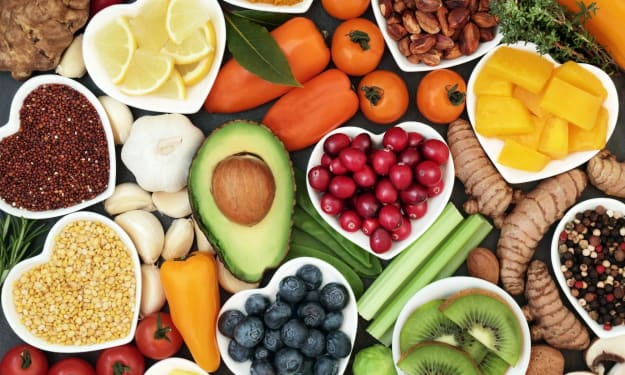Why You Shouldn't Eat This, According to Everyone
What are humans supposed to eat for going against any agenda?

What are humans supposed to eat for going against any agenda? Let's investigate our ancestors' diets and follow them to the present, learning what the body reacts to and doesn't react to. After this unexpected journey, I can assure you that we will have the answer, but I warn you—you might not like it.
Therefore, I believe the best place to start is at the very beginning. About 7 million years ago, early hominids initially appeared. Little is known about our ancestors from this period, although remains of the earliest hominids, Sahelanthropus Chadis, have been discovered.
These fossils include small teeth with strong enamel indicating they mostly consumed softer foods, while they did occasionally consume tiny amounts of hard foods like nuts and seeds. Fruits, leaves, insects, and occasionally meat—though if they had consumed meat, it would have been little animals like rats or mice.
Fish, birds, and small reptiles For the following few million years, the artificial diet stayed the same, but Lucy interfered and ruined everything by saying asinine "I want to eat chubbies." Earlier animals would not have been able to eat chubbas since humans had not yet discovered cooking to make them softer. Several hundred fossilized bone fragments were found in Ethiopia in 1974; they were dated to approximately 3.2 million years ago.
The fossilized bone was named Lucy, and she is one of the Lucy filled in a lot of the chronological gaps for us. She found some of the best-preserved examples of outrageous, a genus of homo sapiens that lived between 4 and 3 million years ago. Notably, she demonstrated a significant improvement in the structure of the jaw and teeth. OST epilogues would have been able to eat far more nuts and seeds than shall opus and hard, uncooked vegetables like tubes.
They would also have been able to process tougher, slightly larger pieces of meat if they could scavenge it. Speaking of which, we didn't begin hunting meat until 2 million years ago, when Homer erectus first appeared on the planet. Homo erectus was taller.
The biggest change in our ancestors' diet came after they learned to control fire. For a long time, we thought this happened about 400,000 years ago, but Ash's founding caves in South Africa suggest it was actually about 1.5 million years ago. These traits allowed them to develop more sophisticated tools, enabling them to hunt and process meat more efficiently. Also, fossil evidence shows clear signs of butchery on small animal bones dating back to this era suggesting we ate meat with more regularity at this time.
Because prepared food requires less chewing, our jaw size steadily shrank. dimensions Because the gut didn't need to expend as much energy digesting food after this era, fibrous root vegetables and tough, cherry lean meats like game were more frequently served. The impact of this increased meat consumption was significant, and it's thought that the high-quality nutrients found in meats were essential in the evolution of our larger, more complex brains.
While heating allows for increased nutrient absorption of all food types leading to a much faster development of the species, meat is more energy-dense than plants and is high in B12, zinc, and iron, all of which are necessary for brain development generally. Then things continued very much as they had before.
much the same for the next million years, until roughly 10,000 years ago, when the advent of agriculture marked the biggest change in the diet of Homo sapiens. We abandoned our nomadic lifestyle of hunting and gathering in favor of farming and settling in one place. Before the development of agriculture, the human diet had to be adapted to the environment we found ourselves in; populations living near bodies of water would have eaten more fish and seaweed, while those in forested areas would have eaten more fruits, nuts, and game. However, in a post-agricultural world, we could now, for the first time in history, adapt the environment to us. Within a few short centuries, the amount of forest
Food in our diets drastically decreased; we started to eat far fewer nuts, seeds, wild fruits, and game meat in favor of grain, more grain than you could shake a sheath of wheat. This allowed Homo sapiens to spread throughout the world and increase in number, but agriculture wasn't always a good thing because early agriculture was severely deficient in several essential nutrients, including vitamins A and C, which are found in fruits and vegetables, and b12 and omega-3 fatty acids, which are found in meat and fish.
In this new grain-based diet, which was also high in carbohydrates and, as we will see, provided you with a lot of energy but lacked nutritional value, we conquered the environment and made it our slave. As a result, we became unhealthy slops; skeletal remains from this period show an increase in dental issues like cavities and gum disease conditions that were uncommon among hunter-gatherer populations; there was also a decrease in average stature and an increase in signs of malnutrition and diseases related to nutritional deficiencies;
however, something else rather interesting happened during this time: our genes changed significantly, specifically most human cultures, though not all of them very quickly in the timeline of evolution at least developed lactase persistence, a fascinating gene
Agriculture may have made humans less healthy than ever before, but you may think that this trend was reversed at some point because more people were eating a varied agricultural diet with the advent of the Middle in the 18th century, which allowed some human population groups to digest lactose into adulthood—something we couldn't easily do before. This trait is a direct and rather rapid consequence of the domestication of dairy animals. It's a stellar example of how the development of agriculture, even in the short space of 10,000 years, has etched a permanent Mark into our DNA.
diet more than in the past The days of eating bread and GRL for breakfast, lunch, and dinner were over, and in their place were a variety of farm-grown meats, fruits, vegetables, complex carbs, nuts, seeds, and pulses, as well as a rise in preserved Food also meant improved nutrition during the winter, and yes, this all contributed to our beginning to recapture and even exceed the levels of health and nutrition that we had left behind in our hunter-gatherer days, and in industrialized nations, life expectancies burst through previously unheard-of barriers.
The problem was that this only occurred in middle-class regions of the world where access to such a diverse and nutrient-rich food was available. Additionally, there was the Great Plague not the black death, but something far worse—the scourge of processed food—that, once it started to eat away at civilization, started to erode us from the inside out.
food right now I won't go into detail about the terrible effects of processed food here because, at this point, we've all probably heard enough lectures about it. However, one thing is certain: as processed food has spread throughout the world, obesity rates have skyrocketed. Over the past few decades, multiple metal IES have discovered a strong correlation between so-called ultra-processed foods and a higher risk of heart disease, stroke, and premature death. So, we've finally established what humans have been eating for the past 7 million years.






Comments
There are no comments for this story
Be the first to respond and start the conversation.